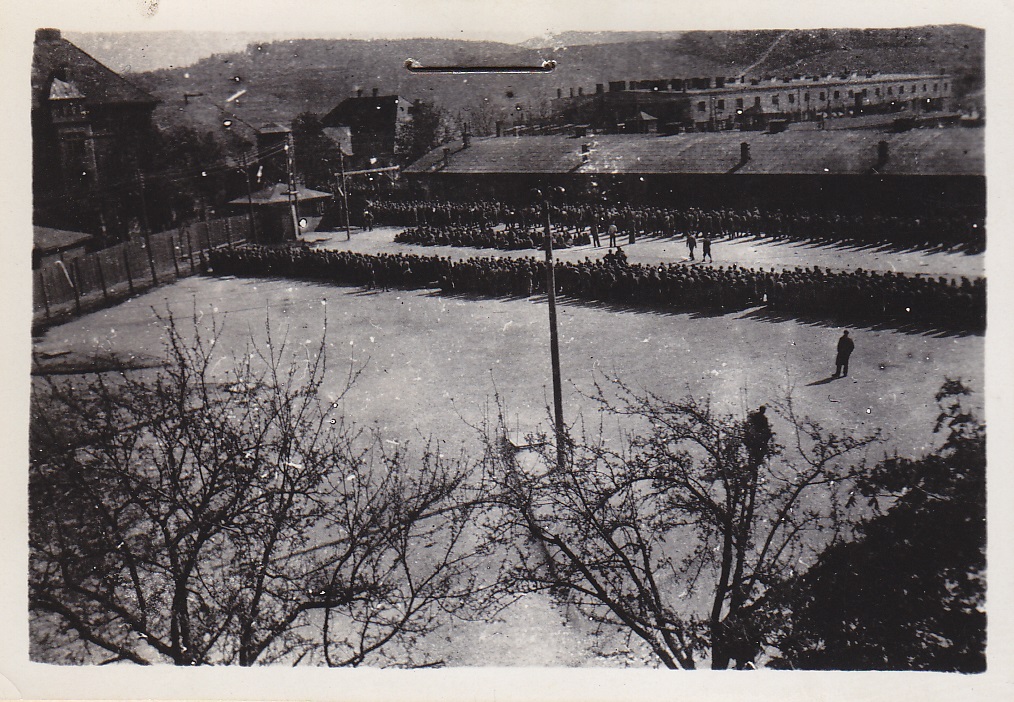The Melk prisoners
The number of prisoners forced to work at the Melk subcamp who are known by name according to the latest research is 14,304. All of them were men. They came from more than 30 different countries and spoke around 40 different languages. The largest national groups were prisoners from Poland (approx. 27.8 percent), followed by Hungary (approx. 24.2 percent), the Soviet Union including Russia (approx. 16.5 percent), France (approx. 11.6 percent), the “German Reich” including Austria (approx. 6.2 percent), Italy (approx. 4 percent), Greece (approx. 3 percent) and Yugoslavia (approx. 2.5. percent).
Almost 41 percent of the prisoners exploited for their forced labour in Melk had been imprisoned in concentration camps for political reasons. They were known as ‘protective custody prisoners’ and wore the red triangle. A slightly smaller proportion of the Melk prisoners (approx. 40 percent) were categorised as Jewish by the Camp SS, and were therefore imprisoned on racist grounds. The third-largest group were the ‘civilian workers’, who mainly came from the Soviet Union (including Russia). The approximately 14,400 prisoners at Melk were divided into a total of 13 categories.
The demands for all these prisoners to be transported to the Melk subcamp for use as forced labourers in the tunnels of ‘Project Quartz’ came from the numerous contracting civilian firms, including Steyr-Daimler-Puch AG. At times the requirements of the armaments industry for forced labourers were so great that the Mauthausen commandant staff was unable to deliver the required numbers. One consequence of this was that over the course of the camp’s existence, the criterion of ‘ability to work’ was increasingly ignored, to such an extent that in January 1945, 121 children aged nine to fourteen were assigned to forced labour in Melk. Hundreds of prisoners died every month because of the extremely poor living and working conditions or were transferred back to the Mauthausen main camp due to ‘inability to work’. Nevertheless, by the end of January 1945 the number of prisoners in Melk had risen to more than 10,000. For comparison: the town of Melk had a total of 4,670 inhabitants at the start of the Second World War in 1939; as of 1 January 2017 the population is 5,390.
An individual’s chances of survival in the camp depended primarily on the Melk concentration camp prisoners at roll call on the parade ground in the protective custody camp. Photo: NARA, Kurt Zalud, April 1945. racist criteria on which the Camp SS based their treatment of prisoners. Those of non-Jewish German origin were at the upper end of the scale, followed by those from north- and west-European countries, along with Poland and the Soviet Union, while the lower end was made of up prisoners – regardless of their nationality – categorised as Jewish, Roma and Sinti and so-called ‘asocials’. In the subcamps that, like Melk, were set up for forced labour in the armaments industry, there was a certain flexibility to this scale when it came to prisoners who had desirable professional qualifications. Skilled workers tended to have a better position within the camp society than labourers.
Melk concentration camp prisoners at roll call on the parade ground in the protective custody camp. Photo: NARA, Kurt Zalud, April 1945. racist criteria on which the Camp SS based their treatment of prisoners. Those of non-Jewish German origin were at the upper end of the scale, followed by those from north- and west-European countries, along with Poland and the Soviet Union, while the lower end was made of up prisoners – regardless of their nationality – categorised as Jewish, Roma and Sinti and so-called ‘asocials’. In the subcamps that, like Melk, were set up for forced labour in the armaments industry, there was a certain flexibility to this scale when it came to prisoners who had desirable professional qualifications. Skilled workers tended to have a better position within the camp society than labourers.